Featured Panoramic Photo Above:
Classic Charles Conlon photo of Ty Cobb sliding into Jimmy Austin
Baseball History Comes Alive Now Ranked As a Top Five Website by Feedspot Among All Baseball History Websites and Blogs!
(Check out Feedspot's list of the Top 35 Baseball History websites and blogs)

Guest Submissions from Our Readers Always Welcome! Click for details
Scroll Down to Read Today’s Essay
Subscribe to Baseball History Comes Alive for automatic updates. As a Free Bonus, you’ll get instant access to my Special Report: Gary’s Handy Dandy World Series Reference Guide!
Perfect Game Photo Gallery
Click on any image below to see photos in full size and to start Photo Gallery:
A Perfect Game Rarity!
What Are The Odds?? Who Can Do The Math??
As some of you may recall, I enjoy writing about baseball’s rarities. In addition to writing about Perfect Games – one of baseball’s most rare occurrences – I’ve had fun writing about unassisted triple plays, four home runs in one game, reverse cycles, and I even had a post on reverse natural cycles!
I just finished reading a great book by Lee Lowenfish, Baseball’s Endangered Species: Inside the Craft of Scouting By Those Who Lived It. A detailed review of the book will follow in short order. I have to comment on one extremely interesting item I found while reading the book. Since it has to do with something of historical note, naturally my “baseball history alarm bells” went off immediately. As your friendly Baseball History Comes Alive editor, I’d be remiss in my duties if I failed to bring it to your attention!
But before I tell you what it is I’m all excited about, here’s a little background information about Perfect Games to put this discovery into proper context:
In doing a little research…
I found that since the founding of the National League in 1876, 148 years ago, there have been 238,277 major league games. Over this time, there have been a grand total of 24 perfect games, the first thrown by Lee Richmond in 1880, and the last by Domingo German earlier this year, June 28, 2023. Dividing 24 into 238,277, we get the result of 9,928, meaning that a Perfect Game occurs once in every 9,928 games. Turning this into a percentage, we find that a given game has about a .01% chance of becoming a Perfect Game (24/238,277=.0001). For you non-math types out there, that’s one one-hundredth of one percent!
Those are pretty long odds themselves, but what really threw me for a loop was that Lee Lowenfish mentioned in his book that only one player in the long history of major league baseball has played in — are you ready for this? — not one…not two…but three of those 24 Perfect Games!
Now I’ve always been pretty good in math, but I’ll have to defer to someone else above my pay grade to figure out what are the odds of one player participating three times in a certain event that only occurs once in every 9,928 chances. If you can do this calculation — or if you know of someone who can — please let me know! The odds have to be astronomical!
Now before I tell you who this player is — and to hopefully keep you in suspense! — here’s some interesting information about Perfect Games. But don’t worry…I’ll reveal the player’s name at the end of the essay.
The First Perfect Game
You’re probably wondering who the skinny guy with the weird baseball uniform in the photo below is…and why is he being featured, anyway?
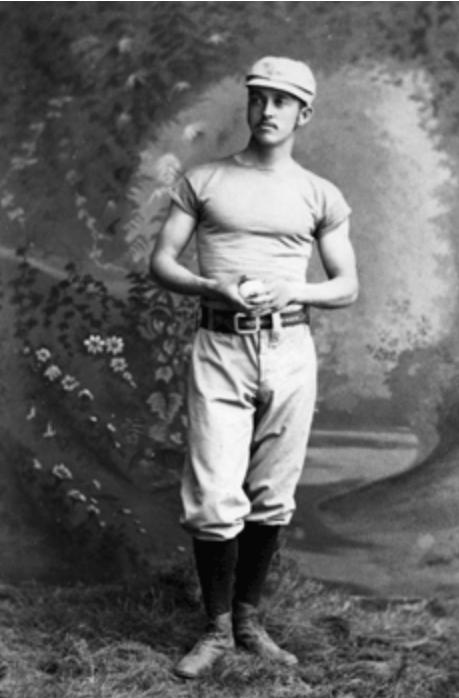
He’s none other than the aforementioned Lee Richmond, who threw major league baseball’s first officially recognized Perfect Game in 1880 while playing for the National League’s Worcester Ruby Legs.
The game was vastly different back in 1880. For example, only underhand pitching from a flat, marked-out box 45 feet from home plate was allowed. Also, it took eight balls to draw a walk, and a batter was not awarded first base if hit by a pitch. So should the two Perfect Games from the pre-modern era even be counted? If we eliminate them, then only 22 Perfect Games have been thrown in the modern era. For the featured photo above, I chose the great Cy Young, who threw the first post-1900 Perfect Game on March 5, 1904 (a list of the 24 Perfect Game pitchers is at the bottom of the post).
Some interesting Perfect Game trivia
- Lee Richmond played professional baseball for only six years and pitched full-time for only three, finishing with a losing record. After the 1883 season, he established a medical practice and later became a high school teacher.
- The second perfect game was thrown by John Montgomery Ward for the Providence Grays. Remarkably, it came only five days after Richmond’s. They are the only two of the pre-modern era.
- No pitcher has ever thrown more than one Perfect Game.
- The Perfect Game thrown by Don Larsen in Game Five of the 1956 World Series is the only World Series Perfect Game in major league history.
- There were three Perfect Games in 2012, with no other year ever having more than two.
- There have been spans of 23 and 33 consecutive seasons in which not a single Perfect Game was thrown.
- Seven Perfect Game pitchers are in the Hall of Fame: Cy Young, Addie Joss, Jim Bunning, Sandy Koufax, Catfish Hunter, Randy Johnson, and R0y Halladay.
- Four Perfect Game throwers, Dennis Martínez, Kenny Rogers, David Wells and Mark Buehrle, each won over 200 major league games.
- Most Perfect Games were thrown by accomplished major leaguers: In addition to the HOFers mentioned above, David Cone won the Cy Young once; Matt Cain is a three-time All-Star and three-time World Series champion; Félix Hernández is a Cy Young Award winner and a six-time All-Star; Mike Witt and Tom Browning were solid major league pitchers.
- Four from the modern era were journeyman pitchers who finished their careers with losing records: Don Larsen, Charlie Robertson, Len Barker and Dallas Braden.
- Philip Humber had never before thrown so much as a complete game prior to his Perfect Game, with only 16 career wins, by far the lowest of any Perfect Game pitcher.
Pitchers Who Have Thrown Perfect Games:
- Lee Richmond June 12, 1880
- John Montgomery-Ward June 17, 1880
- Cy Young March 5, 1904
- Addie Joss October 2, 1908
- Charlie Robertson April 22, 1922
- Don Larson October 8, 1956
- Jim Bunning June 21, 1964
- Sandy Koufax September 8. 1965
- Catfish Hunter May 8, 1968
- Len Barker May 15, 1981
- Mike Witt September 30, 1984
- Tom Browning September 16, 1988
- Dennis Martinez July 28, 1991
- Kenny Rogers July 28, 1994
- David Wells May 17, 1998
- David Cone July 18, 1999
- Randy Johnson May 18, 2004
- Mark Buehrle July 23, 2009
- Dallas Braden May 9, 2010
- Roy Halladay May 29, 2010
- Philip Humber April 21, 2012
- Matt Cain June 13, 2012
- Felix Hernandez August 15, 2012
- Domingo German June 28, 2023
Only Major Leaguer Who Has Played In Three Perfect Games Is…
And now for the big news: the only player in major league history to have participated in three Perfect Games is Paul O’Neill. As a member of the Reds, he was in the lineup for Tom Browning’s Perfect Game on September 16, 1988. Then as a Yankee, he was in right field for David Well’s Perfecto on May 17, 1998, and then again for David Cone’s on July 18, 1999.
In another baseball oddity, there were six Yankees who also played in both the Wells and Cone Perfect Games. Besides O’Neill, the others were Chuck Knoblauch, Derek Jeter, Tino Martinez, Bernie Williams, and Scott Brosius. As far as I can tell, there are no others who played in more than one Perfect Game.
That’s what I love about baseball history: You learn something new almost every day!
Gary Livacari
Subscribe to our website, Baseball History Comes Alive with over 1400 fully categorized baseball essays and photo galleries, now surpassing the one million hits mark with 1,128,000 hits and over 950 subscribers: https://wp.me/P7a04E-2he
Information: Stats from Baseball-Reference.com

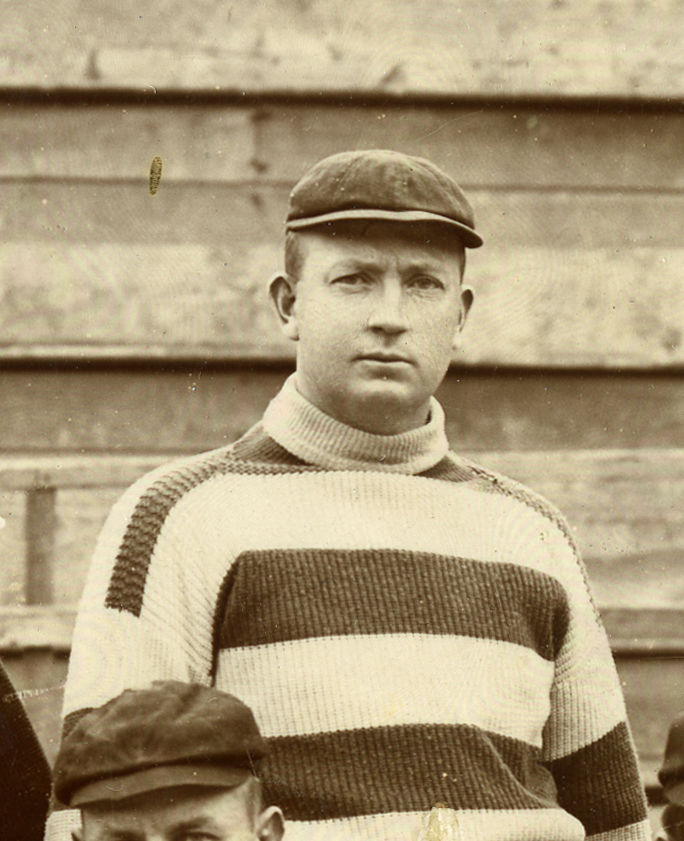
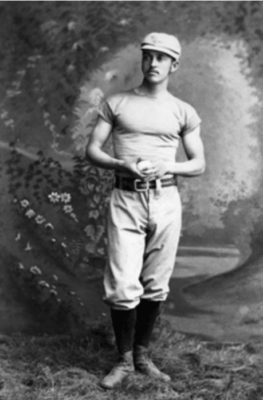
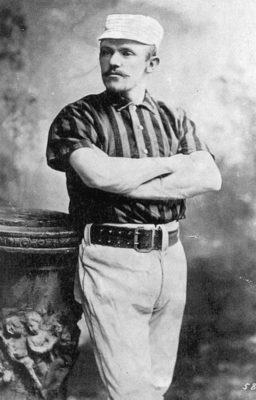
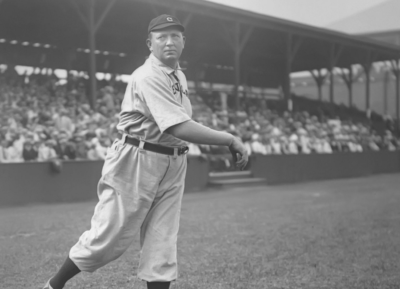
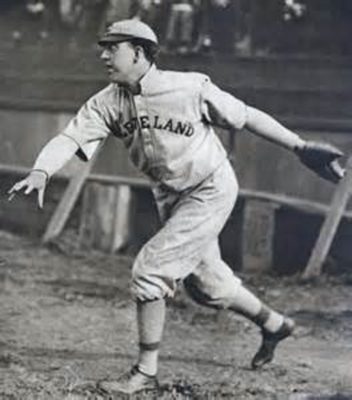
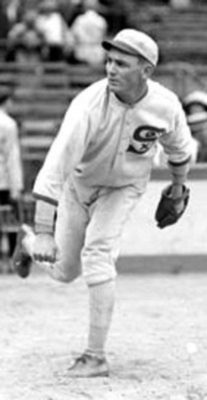
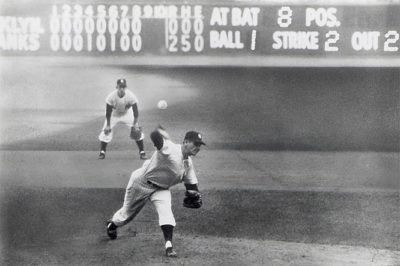
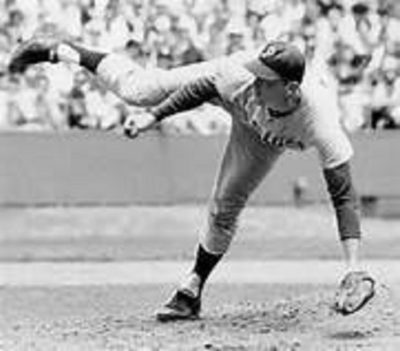
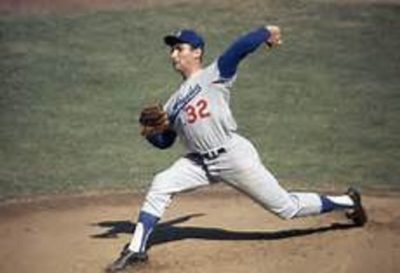
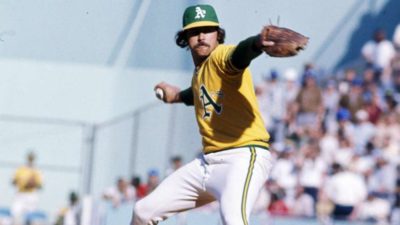
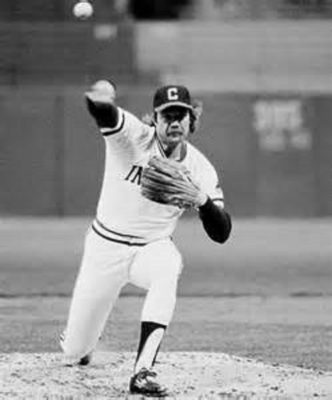
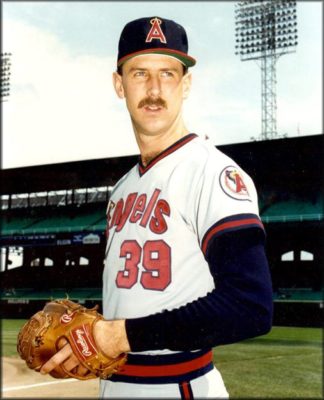
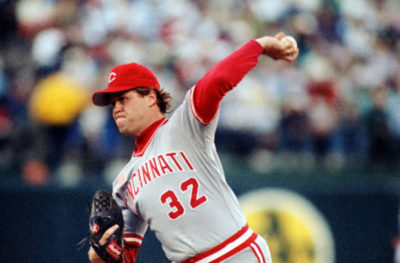
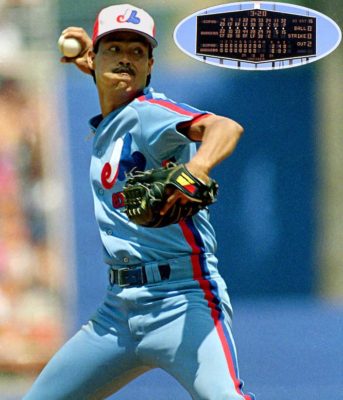
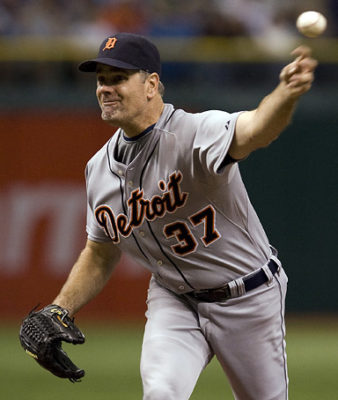
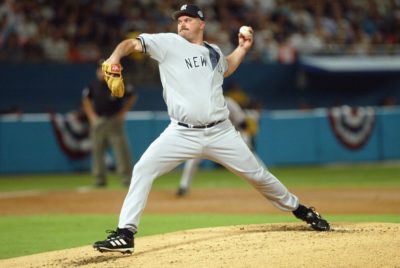

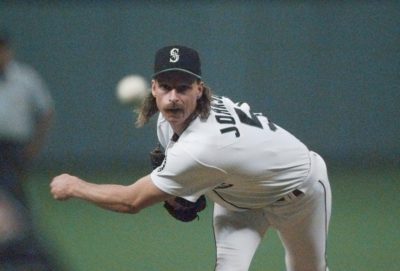
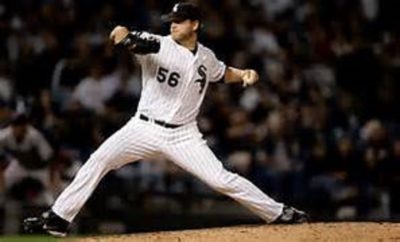
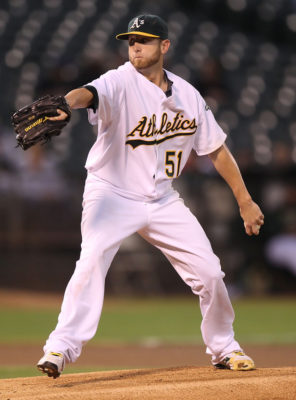

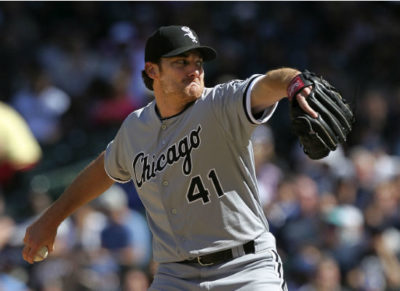



I will have an answer to your odds question shortly. I know just the person to answer that.
Thanks Mike! As I said…it’s above my pay grade!
Very interesting, Gary. I always learn a lot by reading your essays. Paul O’Neill was in the right place at the right time – playing in three perfect games. He should buy a lottery ticket.
I enjoyed reading Lee Lowenfish’s book and look forward to your review.
Thanks Sue. And, yeah, I enjoyed Lee’s book also, especially the part about your dad, Birdie! I really learned a lot about him!
Concerning Don Larsen being a journeyman with a losing record (81-91), I’d like to say in his defense that in his first two years in the majors he pitched for the 1953 Browns (54-100) and the 1954 Orioles (also 54-100). He was 7-12 with the Browns, and 3-21 with the Orioles. Those were poor teams. If you remove those seasons from his W-L record, for the rest of his career he was 71-58, a .550 win%. Though never an All-Star, he was a competent major-league pitcher. Another such indicator is that in 5 World Series, Stengel used him 10 times — 6 starts and 4 games in relief. His WS record was 4-2 with a 2.75 ERA.
Thanks David…glad to set the record straight on Don Larsen and give him the credit he deserves!
Thanks to our reader Pete Aman for sending this email and sharing this information about umpire Ted Barrett:
Gary, I enjoyed reading your essay about perfect games.
I recently was in contact with Ted Barrett, MLB umpire, for a story I did for another book.
Turns out he is the only umpire to ever call 2 perfect games behind the plate: David Cone in 1999 and Matt Cain in 2012.
Odds of that are pretty small, too.
Merry Christmas,
Pete Aman
Superb article, Gary. Very interesting and informative. In addition to those 24 perfectos, let me mention the EXTREMELY unfortunate result of a “near-perfect” game Harvey Haddix pitched for the Pirates vs. the Braves in May,1959. For 12 innings, no Milwaukee batter had reached base. But in the bottom of the 13th, Felix Mantilla acquired 1st base due to a throwing error by 3rd baseman Don Hoak {normally an excellent fielder}. Eddie Mathews advanced Mantilla to 2nd with a sac bunt. To set up an inning-ending DP, Hank Aaron was intentionally walked. Up next was Joe Adcock, who hit one to deep right-center, clearing the first of two outfield fences @ County Stadium, resulting in a baserunning infraction {passing a PRECEDING runner}. Seeing the ball bounce off the 2nd fence {thinking it was the actual HR 1st fence} thereby assuming Mantilla’s run was a walk-off 1-0 win, Aaron rounded 2nd and went towards his dugout. Adcock however; knowing his hit was a HR, completed rounding all 4 bases, passing Aaron in the process. Instead of Adcock being credited with a walk-off 3-run HR Milwaukee win, the baserunning mistake resulted in him being credited with a double, hence, a 1-0 final score. A rare base-running blunder by the great “Hammerin’ Hank”. Poor Harvey Haddix, the unfortunate victim of a “what-could-have-been” maybe worse than the Andres Galarraga/ Jim Joyce saga.
Thanks Tom…I wrote about the Harvey Haddix game last year: https://wp.me/p7a04E-anM
All of which, Sir Marshall, leaves me with one sure way to remedy the cruel injustice dealt Harvey Haddix in his herculean 12 inning pitching masterpiece. Imagine, retiring 36 consecutive major league batters and not even gaining a victory!
Here’s the new rule to be placed in the books immediately and effective retroactively:
Any starting pitcher who retires 27 batters, which is a regulation game, without giving up a base hit will be credited with a no-hitter. Any starting pitcher who retires 27 batters without allowing a single batter to reach base, will be credited with a perfect game.
Whatever happens in any EXTRA inning will count in that pitcher’s overall pitching record. But it will not reflect on his performance over the first nine innings (27 outs) of that game, if that pitcher’s performance coincides with the stipulations of the preceding paragraph.
With this rule change, Haddix will thus get credit for a perfect game with an asterisk and an explanation of the unique circumstances surrounding the contest.
Moving forward then, no starting pitcher will ever suffer the outrageous slight that befell Harvey Haddix. Of course, first you have to make me the new baseball commissioner.
BTW, enlightening essay, as usual, Gary!
Thanks Bill…and boy, do I ever agree with you! You get my vote for the next commissioner!
Unfortunately, your proposal makes too much sense for it ever to be adopted!
The number 8 appears somewhere in the date of 15 of these perfect games (with 3 of them occurring on the 8th of the month and 2 consecutive perfects on July 28th, 1991 and the next on July 28th, 1994).
Hmmm…interesting observations. Are you reading anything more into this, or do we just write it off as coincidences?
Just like the fact that you posted the article on Dec. 8th, I think we have to write it off as coincidence ….. or somehow part of the Taylor Swift effect.
Haha! God help us!
Appreciate your enthusiastic support, Gary!
I understand 8 additional fans rose in solidarity to applaud my proposal. But curiously all 8 failed to coordinate both hands so as to actually effect a clapping sound. (Up pops that number 8 again, Jim!)
Guess those 8 will register their approval in a subsequent email. And tomorrow roses will begin blooming on pork chops.
Wasn’t that the sound from one of the Beatles songs when played backwards, or something like that: “Number 8…Number 8…” Little did we know back then…
My only connection to the number eight is that we have grandkid number eight on the horizon. Wonder if that counts for anything…
Professor Bill, It was “number 9, number 9, number 9, etc; a “chant” when played backwards; from the tune “Revolution”, off the White Album {1968}. BTW, many CONGRATS on the impending arrival of the 8th “Mini-Schaefer”.
Near perfect games are as interesting as the perfectos. One that comes to mind occurred on June 23, 1917 at Fenway Park. Babe Ruth was the starting pitcher for the Sox. The opposition was the Washington Senators. Ruth walked the lead off batter, Ray Morgan. Ruth didn’t like the ball four call, argued with the umpire, and wound up throwing a couple of punches at him, meriting an ejection from the game. Ernie Shore replaced Ruth. Morgan was thrown out stealing. Shore retired the next 26 batters.
Thanks Vince, I wrote about that one recently: https://wp.me/p7a04E-b2U